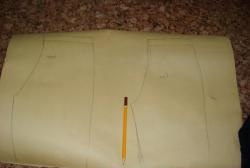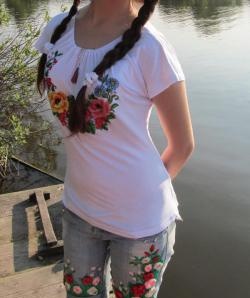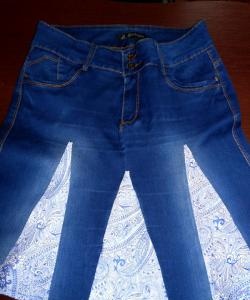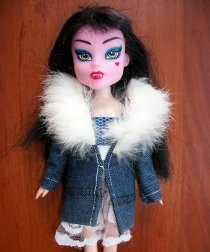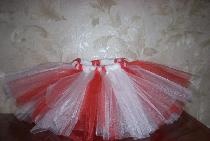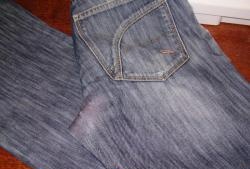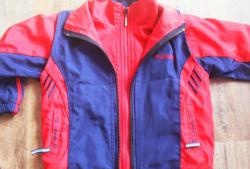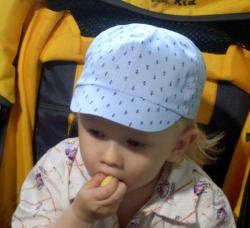New shorts from old jeans
What can you accomplish in ten minutes? Not so much. For example, watch a commercial with a piece of news, slowly drink coffee, take a quick shower, assemble a tiny car from Lego, light a fire from ready-made materials, replace a broken car tire with a spare tire... And you can also sew new shorts from old trousers ! Thus, “kill several birds with one stone” in one fell swoop: recycle an unnecessary but dear thing to your heart, purchase a stylish new thing for free, save time searching for the right wardrobe item in stores. The main thing is that the new shorts will be perfectly adjusted to your size.
Materials for work:
• Old denim trousers – 1 pc.;
• Sewing machine, scissors, pins for pinning.
Stages of work:
First stage: cut off the old trousers.
We measure the required length of future shorts on one trouser leg (simply folding in the excess). Recommended length of denim shorts: just below the knee (or very short, three to four centimeters below the buttock line).
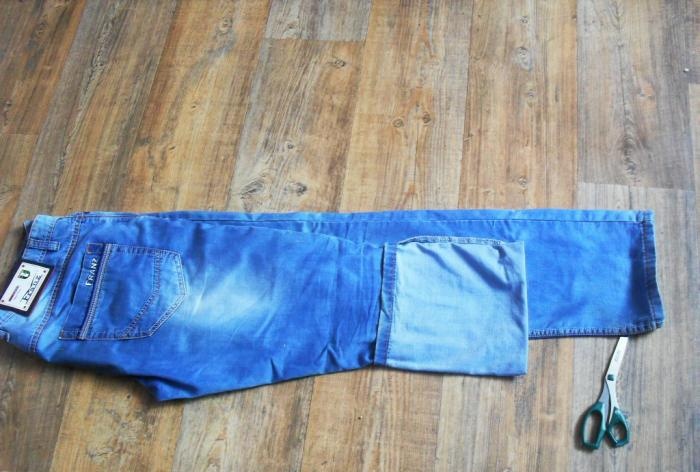
Carefully fold both trouser legs along the side seam and transfer the measurement line for the required length of the shorts to the second leg.We cut off the unnecessary length, retreating two to three centimeters from the measurement line down the trouser leg (this is the seam allowance).
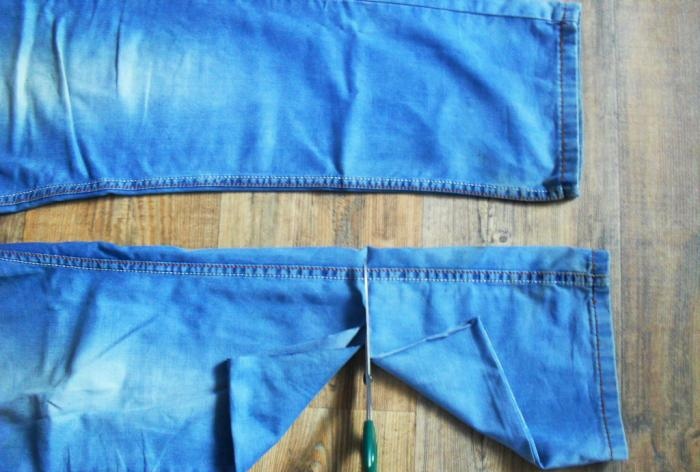
Similarly, cut the second leg.
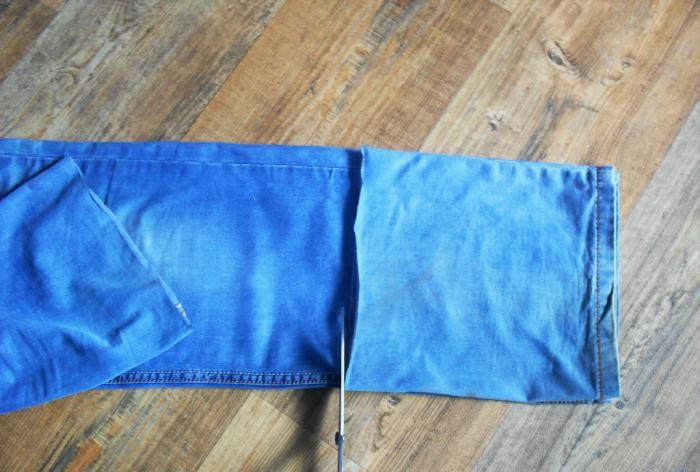
Second stage: we form the hem of the bottom of the parts.
To avoid fraying of the edges of the fabric, we form a hem. To do this, along the perimeter of the entire trouser leg, we bend the fabric inward by about one centimeter. A prerequisite for correct bending is the combination of the side seams of the main part and the hem (otherwise, after hemming, the bottom will turn out wavy).
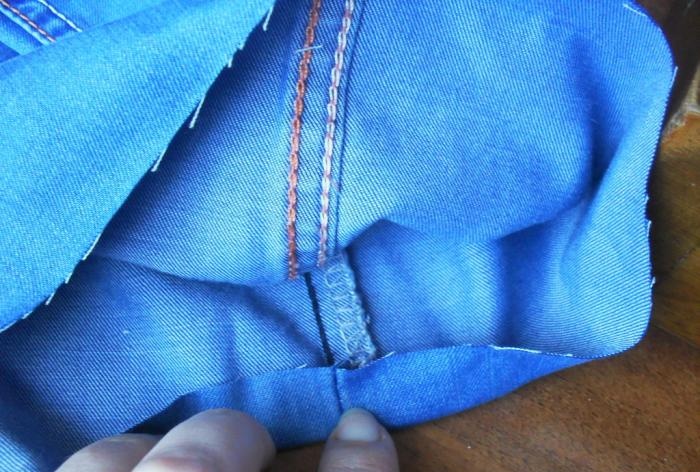
We make another bend inward, one to one and a half centimeters wide. It turns out to be a double hem, the crumbling edge of the fabric remains deep inside.
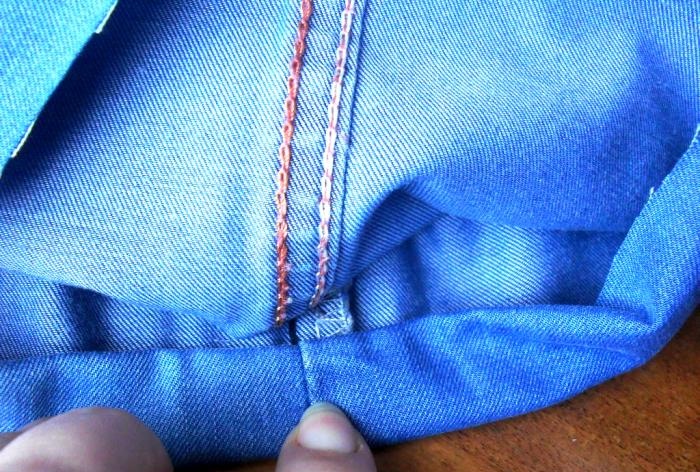
We pin off the formed bend with pins. To avoid uneven folds or mixing of seam lines, you can make a basting stitch with large stitches.
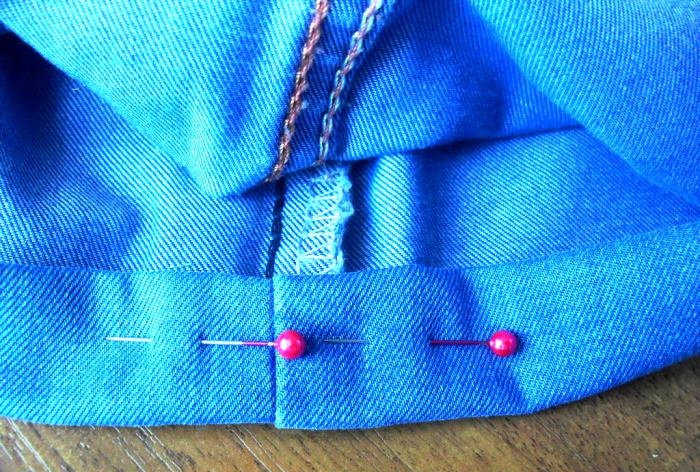
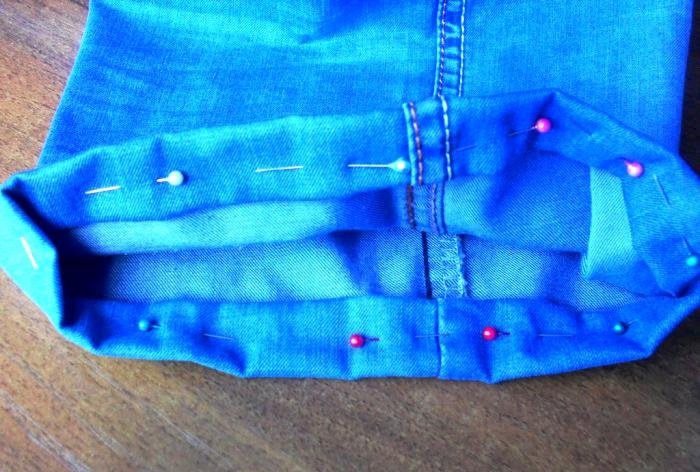
We process the edge of the second trouser leg in the same way.
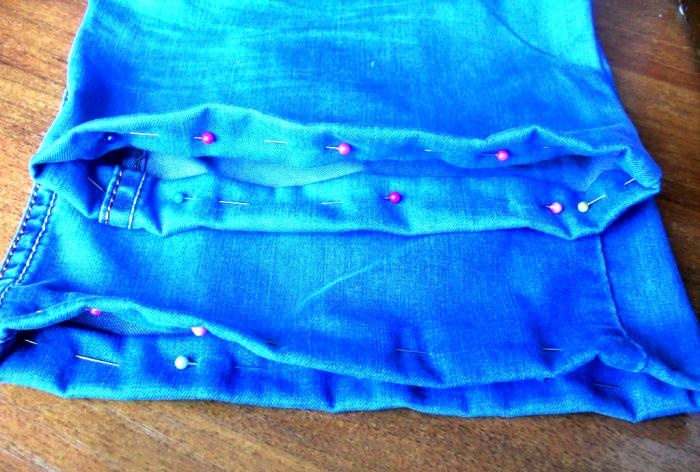
Stage three: sew the hem of the bottom of the trousers.
We place the sewing machine foot on the fabric in such a way that its movement goes along the very edge of the fold.
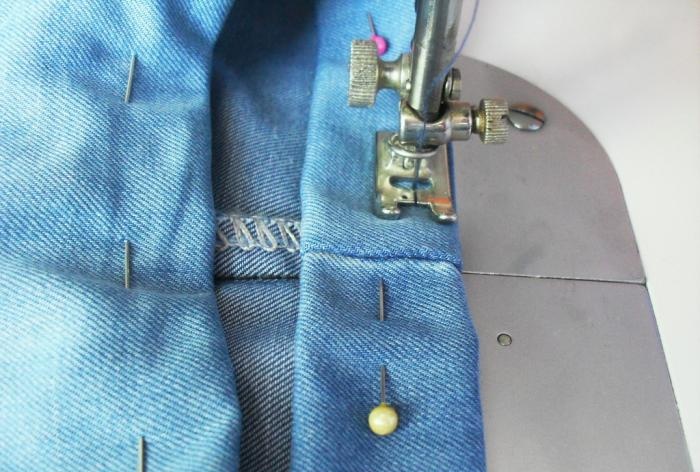
We make a seam all the way to the thick side decorative seam (at this point the thickness turns out to be triple and the machine needle cannot cope with it).
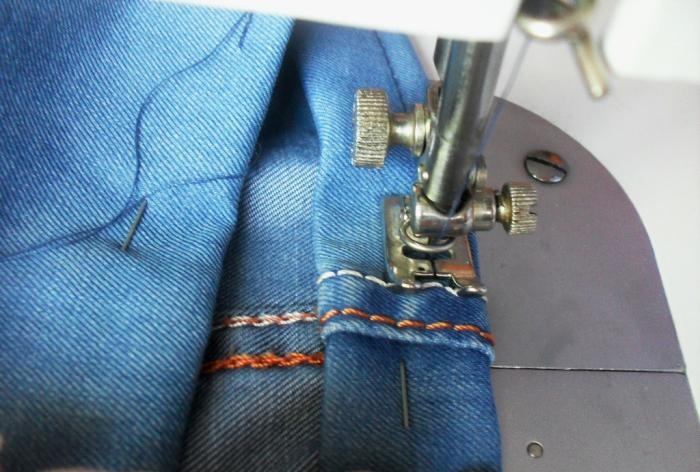
Raise the sewing machine foot and turn the fabric ninety degrees. We make several stitches (so that the needle does not reach the parallel edge of the fold by half a centimeter).
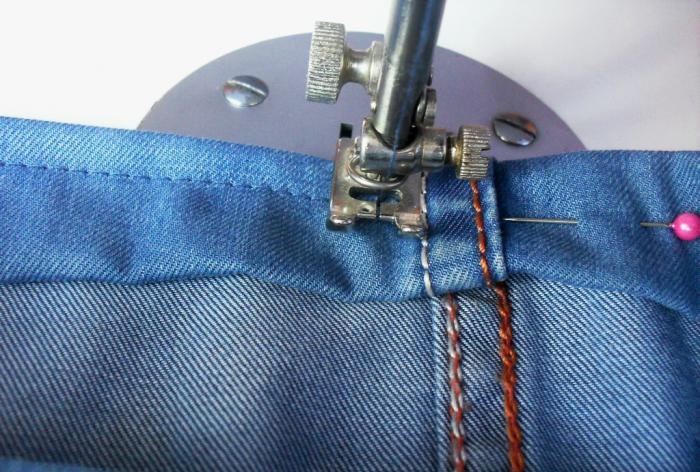
We turn the fabric ninety degrees again. We install the machine foot so that it moves along the other edge of the bend.
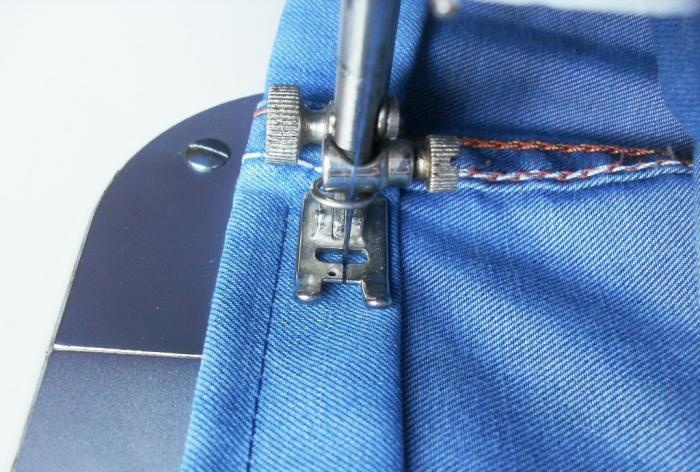
We sew the fold all the way into the thick side decorative seam on the reverse side. We repeat all the turns and make a line to the place where we started hemming the fold.
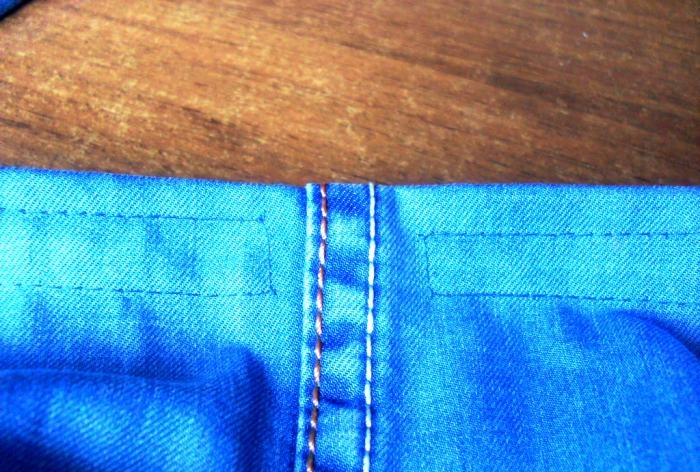
On the wrong side, a thick fold can be sewn to the base by hand.
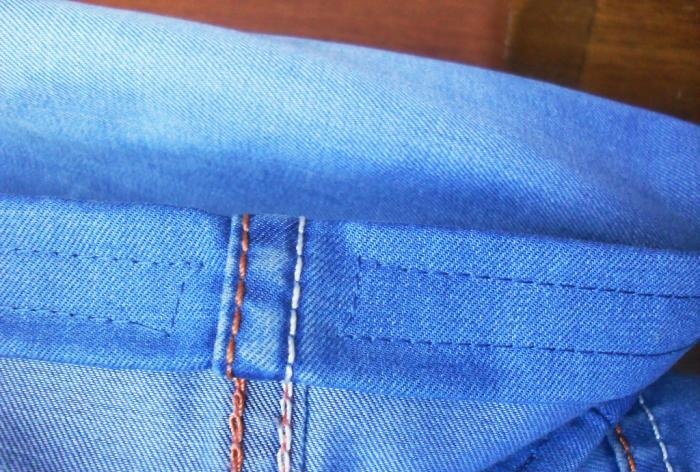
Now the job is finished! With a minimum of effort, maximum results are obtained! Fast, simple, convenient. The main thing: stylish, because denim is a classic that is always in fashion!
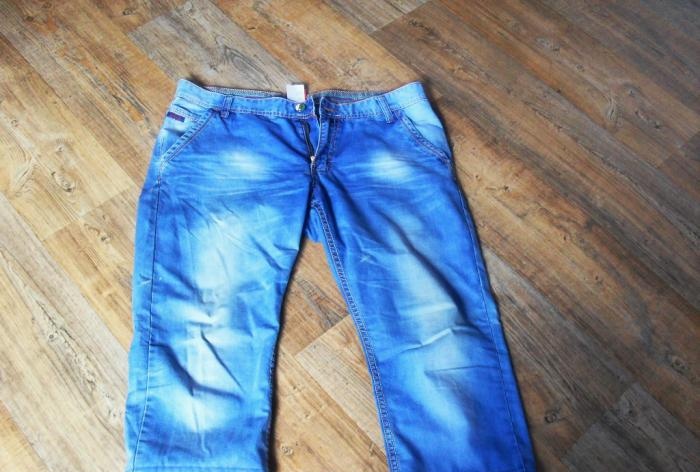
Materials for work:
• Old denim trousers – 1 pc.;
• Sewing machine, scissors, pins for pinning.
Stages of work:
First stage: cut off the old trousers.
We measure the required length of future shorts on one trouser leg (simply folding in the excess). Recommended length of denim shorts: just below the knee (or very short, three to four centimeters below the buttock line).

Carefully fold both trouser legs along the side seam and transfer the measurement line for the required length of the shorts to the second leg.We cut off the unnecessary length, retreating two to three centimeters from the measurement line down the trouser leg (this is the seam allowance).

Similarly, cut the second leg.

Second stage: we form the hem of the bottom of the parts.
To avoid fraying of the edges of the fabric, we form a hem. To do this, along the perimeter of the entire trouser leg, we bend the fabric inward by about one centimeter. A prerequisite for correct bending is the combination of the side seams of the main part and the hem (otherwise, after hemming, the bottom will turn out wavy).

We make another bend inward, one to one and a half centimeters wide. It turns out to be a double hem, the crumbling edge of the fabric remains deep inside.

We pin off the formed bend with pins. To avoid uneven folds or mixing of seam lines, you can make a basting stitch with large stitches.


We process the edge of the second trouser leg in the same way.

Stage three: sew the hem of the bottom of the trousers.
We place the sewing machine foot on the fabric in such a way that its movement goes along the very edge of the fold.

We make a seam all the way to the thick side decorative seam (at this point the thickness turns out to be triple and the machine needle cannot cope with it).

Raise the sewing machine foot and turn the fabric ninety degrees. We make several stitches (so that the needle does not reach the parallel edge of the fold by half a centimeter).

We turn the fabric ninety degrees again. We install the machine foot so that it moves along the other edge of the bend.

We sew the fold all the way into the thick side decorative seam on the reverse side. We repeat all the turns and make a line to the place where we started hemming the fold.

On the wrong side, a thick fold can be sewn to the base by hand.

Now the job is finished! With a minimum of effort, maximum results are obtained! Fast, simple, convenient. The main thing: stylish, because denim is a classic that is always in fashion!

Similar master classes
Particularly interesting
Comments (0)

